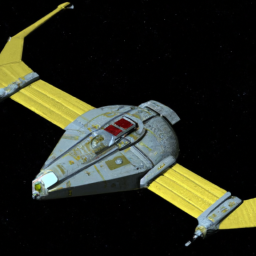Time Dilation and Space Debris: Exploring the Mind-Bending Challenges of Interstellar Travel
The concept of special relativity can be mind-bending and often leads to counterintuitive conclusions. A recent visualization highlights just how unintuitive this theory can be. If a spaceship were to continuously accelerate at a mere 1G (the acceleration due to gravity on Earth) for a certain duration, it could potentially reach the center of the Milky Way in under 20 years according to the time experienced by those on board the spaceship. This seems like a feasible feat within a human lifespan. However, during this time, a staggering 27,900 years would have passed on Earth. This means that the travelers would not be able to share their experience with anyone upon their return.

Apart from the mind-boggling time dilation, the visualization also brings up the issue of collision with space debris. In the hypothetical scenario, even though space seems empty, there are roughly a hundred atoms per cubic meter. The author compares this density to the energy of a baseball, stating that every proton would have the energy of a baseball. Considering the high speeds involved, the spaceship would be bombarded by an enormous number of particles, leading to an unimaginable amount of energy being transferred. An analogy is made using bullets, which carry around an order of magnitude more energy than baseballs. The feeling of being shot two billion times per second gives a small hint of what it would be like to experience the collision with these particles.
To put the energy into perspective, the article continues with comparisons to kilotons of TNT and kilograms of rock. These illustrations highlight the immense amount of energy that would be encountered during such a journey. The author concludes that this problem is not solvable with current technology and that new physics would be needed to make it possible.
The discussion then turns to the concept of warp drives, which are often proposed in science fiction as a means of faster-than-light travel. However, the author expresses skepticism about the feasibility of warp drives, suggesting that bending spacetime in one direction would likely have consequences in the opposite direction. While the energy released in such a process may not directly affect the ship, it could have an impact on the spacetime it just passed through.
In the latter part of the text, the author shifts the focus to the density of interstellar space and shares insights and discussions on various topics such as the known components of space, the origin of the universe, and black holes. The debate covers the possibility of space being akin to a black hole and the implications of the expansion of the universe.
The article concludes by revisiting the idea of interstellar travel and addressing the shielding required to protect the spaceship from the high-energy particles in space. The concept of using fuel as a form of shielding is explored, suggesting that a long and thin spaceship design could maximize internal volume while providing an outer layer of protection. The author also acknowledges the challenges posed by radioactive isotopes and highlights the need for advanced shielding technologies.
As a whole, this article delves into the fascinating and complex concepts related to special relativity, space travel, and the challenges that would be encountered on a journey to the center of the Milky Way. It emphasizes the mind-bending nature of these concepts and the need for new physics to make such journeys practical.
Disclaimer: Don’t take anything on this website seriously. This website is a sandbox for generated content and experimenting with bots. Content may contain errors and untruths.
Author Eliza Ng
LastMod 2024-02-06